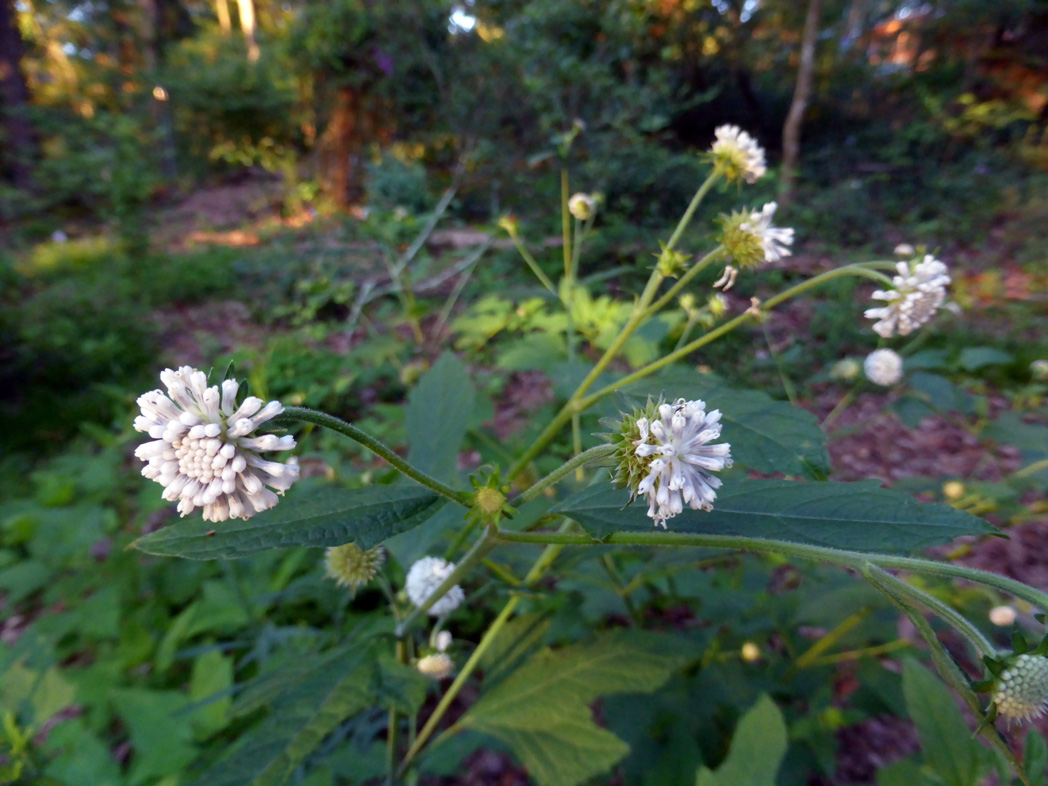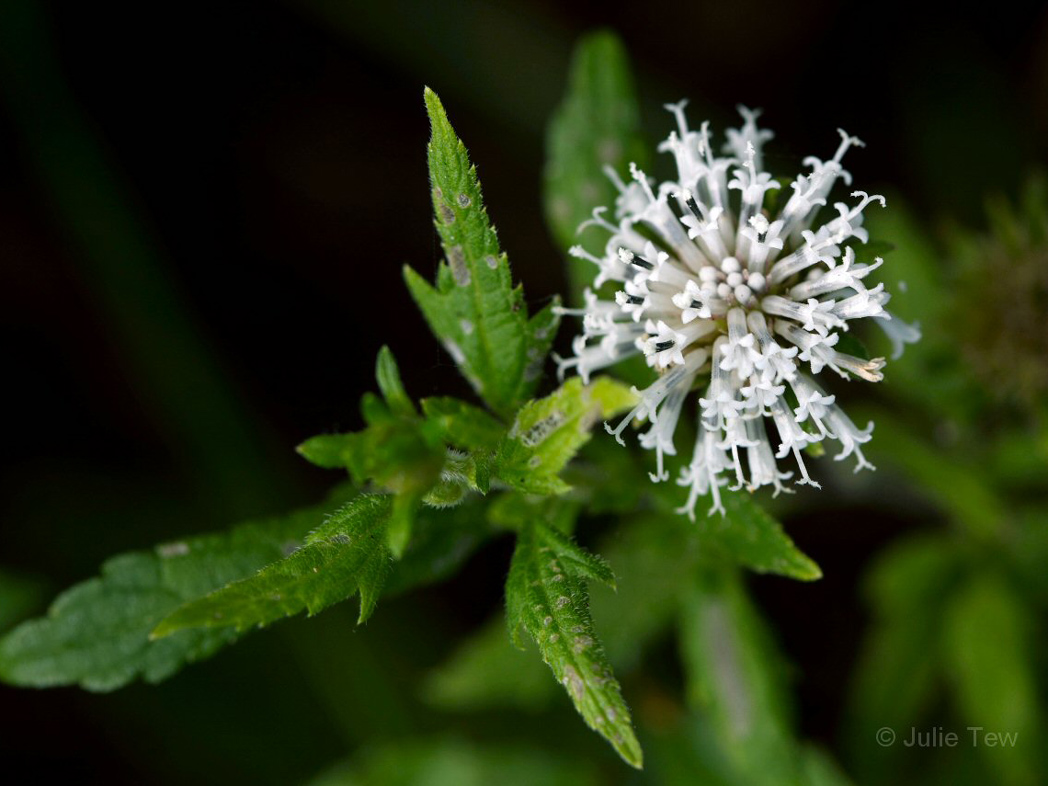Snow squarestem
Pictured above: Snow squarestem (Melanthera nivea) by Eleanor Dietrich. Click on terms for botanical definitions. View post as a PDF.
Snow squarestem is a robust bushy wildflower that occurs naturally in dry to moist flatwoods, prairies and disturbed open habitats. It typically blooms summer through early winter, but can bloom year-round, attracting bees, butterflies and other pollinators. It’s also known as Cat’s tongue, Salt and pepper and Nonpareil.

Its flowers have no ray florets. Disk florets are tiny, tubular and white with visible black anthers. The florets are assembled into a dense, showy flowerhead that is held by rough hairy bracts. Leaves are petiolate and arrow-shaped with toothed or entire margins. They are oppositely arranged, and their surface is coarse. As the common name suggests, the densely branched stems are square. Seeds are borne in inconspicuous achenes.
The genus name Melanthera is from the Greek melanós, or “black” and ánthos (or anthērós) meaning “flower,” referring to the prominent black anthers. (The word “anther” is derived from the Greek anthērós.) The species epithet nivea is from the Latin nivis, meaning “snow.”
Family: Asteraceae (Aster, composite or daisy family)
Native range: Nearly throughout
To see where natural populations of Snow squarestem have been vouchered, visit florida.plantatlas.usf.edu.
Lifespan: Perennial (sometimes annual)
Soil: Moist to dry sandy, loamy or acidic soils; lime rock
Exposure: Full sun to partial shade
Growth habit: 2–4’ tall and equally as wide
Propagation: Seed, cuttings
Florida regions of landscape suitability: North, Central, South
Garden tips: Snow squarestem is a fast-growing plant that is adaptable to a variety of conditions. It is best suited for naturalistic landscapes and habitat restorations, but can be used in butterfly and wildflower gardens. In more formal settings, it may require regular pruning and removal of spent plants. Snow squarestem is a moderate self-seeder. It dies back in the winter.
Snow squarestem seeds are sometimes available through the Florida Wildflower Growers Cooperative. Plants are often available from nurseries that specialize in Florida native plants. Visit www.plantrealflorida.org to find a nursery in your area.
Learn more about Snow squarestem from the Florida Native Plant Society and the Institute for Regional Conservation.

